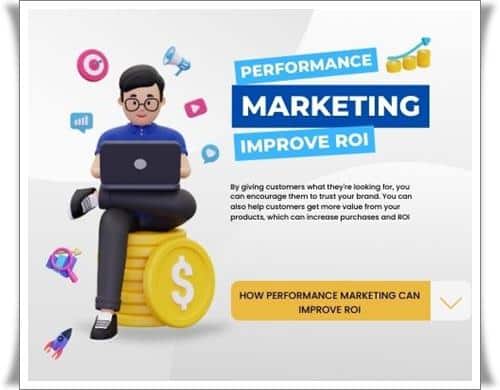
These days when advertising is on the mind, your thoughts are likely to turn immediately to digital marketing, which combines various channels such as social media, pay-per-click ads, email, and SMS, to connect with customers in your targeted audience.
Though digital marketing certainly has its place and effectiveness as an advertising strategy, performance marketing does, too. It is a form of digital marketing that is results-oriented, and companies seeking to reach mass amounts of people stand to benefit from performance marketing, as they’ll only pay when a customer interacts with their content in some form.
Examples of Performance Marketing
You’ll need to use performance marketing software to benefit from performance marketing itself. Performance marketing software allows you to set specific parameters for your ads, such as the demographics of your audience and the budget you can allocate for your ads, and it also allows you to choose the mediums through which you plan to run your ads, whether they be search engines, social media channels, or on television.
Several methods that platforms use to calculate your ad spend include the following:
Cost-Per-Click
Under a cost-per-click (CPC) system, you’ll pay anytime a customer clicks on your ad. CPC advertisements can bring traffic to your website directly, as you’ll appear at the top results of search engines as an advertisement, but the people who click on your website won’t always take further action, like purchasing a product or signing up for a consultation.
Cost-Per-Impression
Cost-per-impression methods impose a fee each time someone views your ad. The views your ad receives may or may not result in additional action from a consumer, but cost-per-impression ads are great for improving your brand’s visibility and getting its name out there.
Cost-Per-Sale
Through a cost-per-sale approach, you pay whenever an ad you run directly results in a sale. Cost-per-sale structures are popular within affiliate marketing, in which the host of the advertisement receives a fee for running your ad that led to the customer’s purchase.
Cost-Per-Leads
In a cost-per-leads structure, organizations use the lead to promote their merchandise or services, which can result in a future sale. The model is similar to that of cost-per-sales, but instead of paying the host for a click that results in a purchase, you’ll pay them whenever a customer takes further action, such as signing up for your email newsletter after seeing your ad.
Cost-Per-Acquisition
Cost-per-acquisition (CPA) methods are similar to cost-per-sale and cost-per-lead. Under a CPA structure, advertisers pay anytime a customer takes a specific action that is pre-defined by the advertiser, which could be a sale or a simple visit to the company’s website.
Why Performance Marketing Improves Your ROI
With performance marketing, you’re only paying for an ad that results in a customer taking a specific action. You’re not paying for ad space; you’re paying for actual customer views or conversions, and that’s a lot different than traditional marketing strategies, such as print advertising or direct mail campaigns, through which companies pay a set amount for ads that may not result in any additional actions from consumers.
Through performance marketing, you’re only paying for the cost of creating the ad and the actions that people take after they see it. There’s no expense involved with simple views, and since you’re only paying for customers’ actions, not ad space, performance marketing works to increase your ROI on your marketing expenditures.
Top Channels for Performance Marketing
Companies use several channels to reach out to consumers via performance marketing. A few include:
Connected TV
Connected TV is one of the newer models of performance marketing, through which your ad runs on streaming television on stations specific to your target audiences. For example, you might run an ad for a set of kitchen knives on the Food Network or an ad for sports equipment on ESPN. According to connected TV statistics, using the connected TV marketing channel is picking up speed, with a 69% increase in user reach at the end of last year.
Social Media
Social media is another marketing channel that delivers results via performance marketing. You can select a social media platform such as Facebook or Twitter to run your advertisements, and you’ll also have the option to set parameters so that your ads appear in the feeds of your targeted audiences.
Performance Marketing Is Key to Any Advertising Strategy
As you plan your next marketing campaign, you’ll want to incorporate some form of performance marketing. Since you’ll only pay for the actions consumers take, such as purchasing a product or visiting your website, the strategy offers a high ROI that few other advertising methods can match.
Leave a Reply
You must be logged in to post a comment.